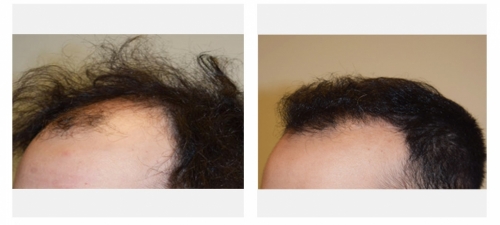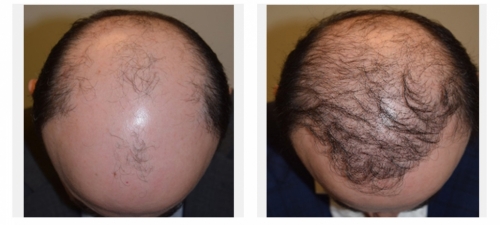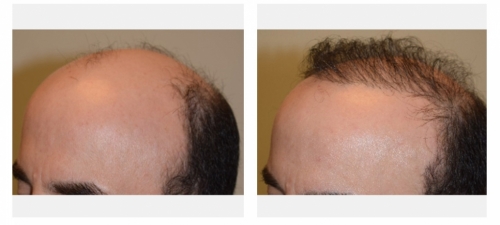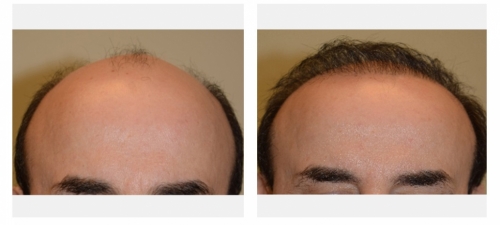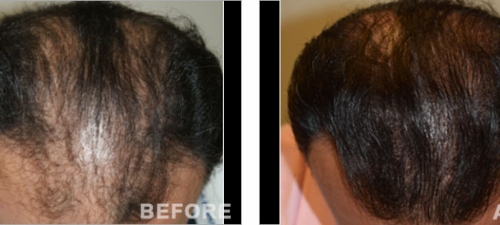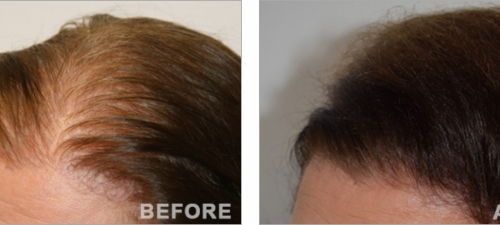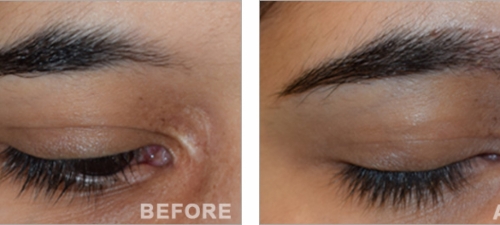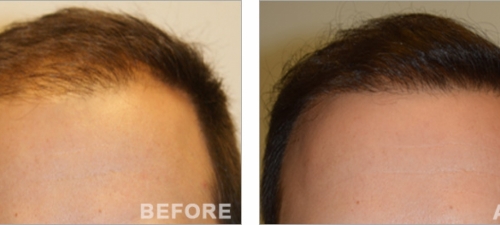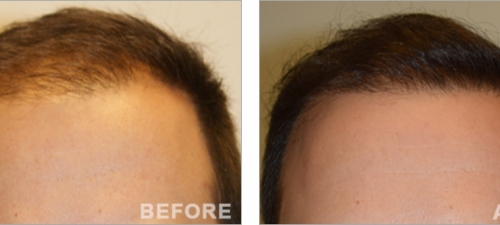Manual Hair Transplantation
Strip or FUE, Micrografting and Minigrafting
The hair is taken from the back of the scalp were hairs are usually abundant, as tiny follicular units (FUEs) that are extracted one at a time. In some cases where it is in the
best interest of the patient, for example women or men with long hair who cannot shave their head for the FUE procedure to be performed, a strip is removed from this area and stitched in a very refined way, leaving an almost invisible scar only 1mm wide. The hairs are then prepared and separated under the microscope and reimplanted into the balding areas in the form of micrografts. Dr Touma specializes in micrografting, which is the implantation of single hairs one at a time to obtain the most naturally looking hairline. The whole procedure is done under local anesthesia and with very little inconvenience post operatively. One or two sessions are generally enough for most people. The eyebrows, beard, and moustache, sideburns (especially after face lift surgery) and other areas of the body as well as hair loss from burn and other scars can be treated.
Donor site:
Selecting a good donor area is very important for a successful transplant. Hairs are usually taken from the back and sides of the scalp which is not subject to hair balding, and will re-grow back to normal length. Dr Touma is keen on using the donor area efficiently without depleting the area from it normal-looking coverage.
Strip versus FUE:
Traditional hair transplantation involves removing a strip of permanent hair-bearing skin from the donor site. The strip is closed in a most refined way with sutures and heals as a very thin line of approximately 1 mm that is covered by hair 3 mm or longer. Strip removal is appropriate for women and men with long hair, and does not requires shaving the donor area.
Follicular Unit Extraction (FUE) is a newer technique whereby hair is removed from the donor back area or sides of the scalp using a very small punch technique, instead of removing a strip. The donor area heals with no linear scar, and only small white points remain, that are covered with hair 1 mm or longer. FUEs are a good option for men with very short hair, who can’t have a visible scar, yet it requires shaving the donor area and hence is not appropriate for most women. In any case there is never a need to shave the recipient area.
Ultimately, Dr Touma has the expertise and refined technical skills to perform both strip and FUE techniques, the preference of which is determined on a case to case basis. FUE is a preference for patients who don’t want a scar in the back of the head or are surgery-phobic, while a strip allows the transplantation of more total hair in less time. Also, with FUE, the donor area needs to be shaved while hair is left long for the strip technique and covers the linear scar in the early days post-op.
 |
 |
 |
No Shave FUE
No shave FUE is a technique that allows patients to have FUE’s without shaving their head totally. Small areas of the scalp are shaved and are scattered throughout the donor area in the sides and back of the head. The FUE’s are delicately removed, and the long unshaved hair covers those areas. Up to 800-1000 grafts can be removed this way, which is sufficient for smaller transplant cases. For larger cases, the no-shave FUE technique can be repeated monthly over time to achieve a large number of transplanted hairs.
Do it right the first time
Many commercial hair transplantation centers advertise heavily, promoting very cheap fees. Patients often travel to these countries and return with unsatisfactory results, due to poor technique or wrong hairline placement or both, leading to a ’transplanted look’. If it sounds to good to be true, it usually is. A hair transplant is a lifetime decision, and will last forever. Good medicine is costly, particularly when technology is involved. Dr Touma has not only perfected the technical and medical aspect of personalized hair restoration, he has a keen sense of elegance that will guarantee you a very natural hair transplant, at fees that are very reasonable compared to other world class practices. Patients are usually looking so natural, even hair transplant surgeons cannot guess they had any work done and this is priceless!
 |
 |
 |
| One hour after completion of FUE procedure |
5 weeks after FUE, no scar |
Two months after FUE no residual sign |

This patient had a manual FUE at a commercial center, with a failed result. You can see that while a large number of FUEs was harvested in the donor area in the back of the head, very few hairs actually grew in the recipient area in the frontal scalp, evidence of a poor technique causing a lot of damaged grafts that eventually don’t grow. Robotic harvesting ensures that all the harvested grafts will grow, making it worth the extra cost.
The carefully dissected grafts are then meticulously implanted into the bald or thinning area of the scalp (recipient area). Implanting micrografts in the hair line has allowed very natural, feathered hairlines, and avoids an abrupt, "pluggy look," that was typical many years ago. A minigraft can be used behind the hairline for added density. Depending on the degree of balding for the frontal area and similarly for the crown area, 1-3 procedures involving several hundred or up to 2000 or more grafts may be required to achieve the desired density (of course, more procedures could be done if hair loss progresses or greater density is desired). Many of our strip sessions technique range between 4000-6000 hairs/session with some sessions reaching 8500 hairs. Within 24 hours small crusts will form on each graft which are shed in approximately 7-10 days. The grafted hairs will start to grow by 6-12 weeks after the procedure and will continue to grow for a lifetime.
Using medical therapy as prescribed by Dr. Touma will enhance hair growth and preserve as much of the pre-existing hairs as possible, so as to reduce further need for hair transplantation.



